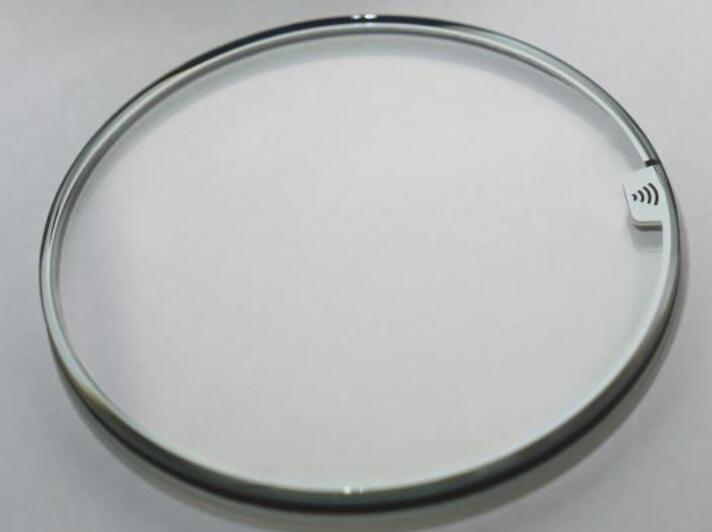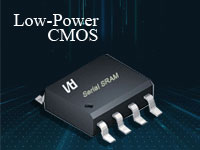RFID chip adds contactless payment to analogue watches
WinWatch in Switzerland has embedded an RFID chip in sapphire to add contactless payment to any analogue watch.
The RFID chip designed at Infineon's contactless competence centre in Graz, Austria is used in the patented STISS (Swiss Technology Inside Smart Sapphire) sapphire crystal to provide secure payment transactions by radio frequency within 200 milliseconds.
More and more people around the world are paying with contactless because it's easy, fast and hygienic. Especially in the wake of the Corona pandemic, the acceptance and spread of the technology has accelerated significantly.
"A fast and robust connection from the watch to the reader at the checkout is crucial for customer acceptance," said Alex Kalbermatten, CEO of Winwatch. "Infineon surpasses all other solutions currently available on the market in terms of wireless quality. For example, by integrating the contactless chip we were able to develop a sapphire crystal that turns every watch - from mechanical heirlooms to metal sports watches - into a contactless payment device. And all of this without a battery."
"Whether with a classic card, a fashion accessory such as a ring or smart wearables – chip innovations from Infineon combine the real and the digital world and enable simple, secured and hygienic payment transactions," says Björn Scharfen, Head of the product line Payment & Ticketing Solutions at Infineon. With our security and contactless expertise as well as energy-efficient chip design, we play a leading role in this growth market".

The most widely used contactless payment method is still the credit or debit card. According to ABI, two thirds of all cards used today are contactless and the share is expected to grow to more than 80 percent by 2025. The market researchers estimate another 1.9 billion contactless cards to be shipped in 2020 worldwide. Payment transactions with smartphones and wearables have doubled within a year from seven to 14 percent.
The embedded chip includes a Secora Pay W secure microcontroller, encryption, near field communication (NFC) radio transceiver and coil-on-module (CoM) antenna for the RFID and is powered by the contactless terminal. The chip confirms the authenticity of the device with an individual signature and creates a cryptogram of card data, payment amount and place of payment. After successful verification, the bank confirms the payment to the reader.
The RFID chip designed at Infineon's contactless competence centre in Graz, Austria is used in the patented STISS (Swiss Technology Inside Smart Sapphire) sapphire crystal to provide secure payment transactions by radio frequency within 200 milliseconds.
More and more people around the world are paying with contactless because it's easy, fast and hygienic. Especially in the wake of the Corona pandemic, the acceptance and spread of the technology has accelerated significantly.
"A fast and robust connection from the watch to the reader at the checkout is crucial for customer acceptance," said Alex Kalbermatten, CEO of Winwatch. "Infineon surpasses all other solutions currently available on the market in terms of wireless quality. For example, by integrating the contactless chip we were able to develop a sapphire crystal that turns every watch - from mechanical heirlooms to metal sports watches - into a contactless payment device. And all of this without a battery."
"Whether with a classic card, a fashion accessory such as a ring or smart wearables – chip innovations from Infineon combine the real and the digital world and enable simple, secured and hygienic payment transactions," says Björn Scharfen, Head of the product line Payment & Ticketing Solutions at Infineon. With our security and contactless expertise as well as energy-efficient chip design, we play a leading role in this growth market".

The most widely used contactless payment method is still the credit or debit card. According to ABI, two thirds of all cards used today are contactless and the share is expected to grow to more than 80 percent by 2025. The market researchers estimate another 1.9 billion contactless cards to be shipped in 2020 worldwide. Payment transactions with smartphones and wearables have doubled within a year from seven to 14 percent.
The embedded chip includes a Secora Pay W secure microcontroller, encryption, near field communication (NFC) radio transceiver and coil-on-module (CoM) antenna for the RFID and is powered by the contactless terminal. The chip confirms the authenticity of the device with an individual signature and creates a cryptogram of card data, payment amount and place of payment. After successful verification, the bank confirms the payment to the reader.
CONTACT US
USA
Vilsion Technology Inc.
36S 18th AVE Suite A,Brington,Colorado 80601,
United States
E-mail:sales@vilsion.com
Europe
Memeler Strasse 30 Haan,D 42781Germany
E-mail:sales@vilsion.com
Middle Eastern
Zarchin 10St.Raanana,43662 Israel
Zarchin 10St.Raanana,43662 Israel
E-mail:peter@vilsion.com
African
65 Oude Kaap, Estates Cnr, Elm & Poplar Streets
Dowerglen,1609 South Africa
E-mail:amy@vilsion.com
Asian
583 Orchard Road, #19-01 Forum,Singapore,
238884 Singapore
238884 Singapore
E-mail:steven@vilsion.com
